Over the past two years, we’ve experienced an event unlike any other we’ve seen before in the world of recruiting: the Great Resignation, characterized by a mass exodus of employees, an intense competition for talent, and the need to source the best candidates to fill a rapidly growing number of open roles. While no longer shiny and new, the Great Resignation has forced organizations of all sizes to rethink how they approach hiring and retention.
In our “2022 Great Resignation: The State of Internal Mobility and Employee Retention Report,” we uncover how organizations can best attract and retain employees during the Great Resignation, specifically looking at the impacts of internal mobility.
Read on to explore all of the insights from our “2022 Great Resignation: The State of Internal Mobility and Employee Retention Report.”
How do employees feel right now?
Culture and perks are often considered top contenders for attracting and retaining talent—however, our report finds that, while employees are happy in their current roles (64%) and plan to remain with their companies for more than a year (59%), they also want more opportunities for internal mobility (13%), flexible work arrangements (20%), upskilling (8%), and competitive compensation (45%).
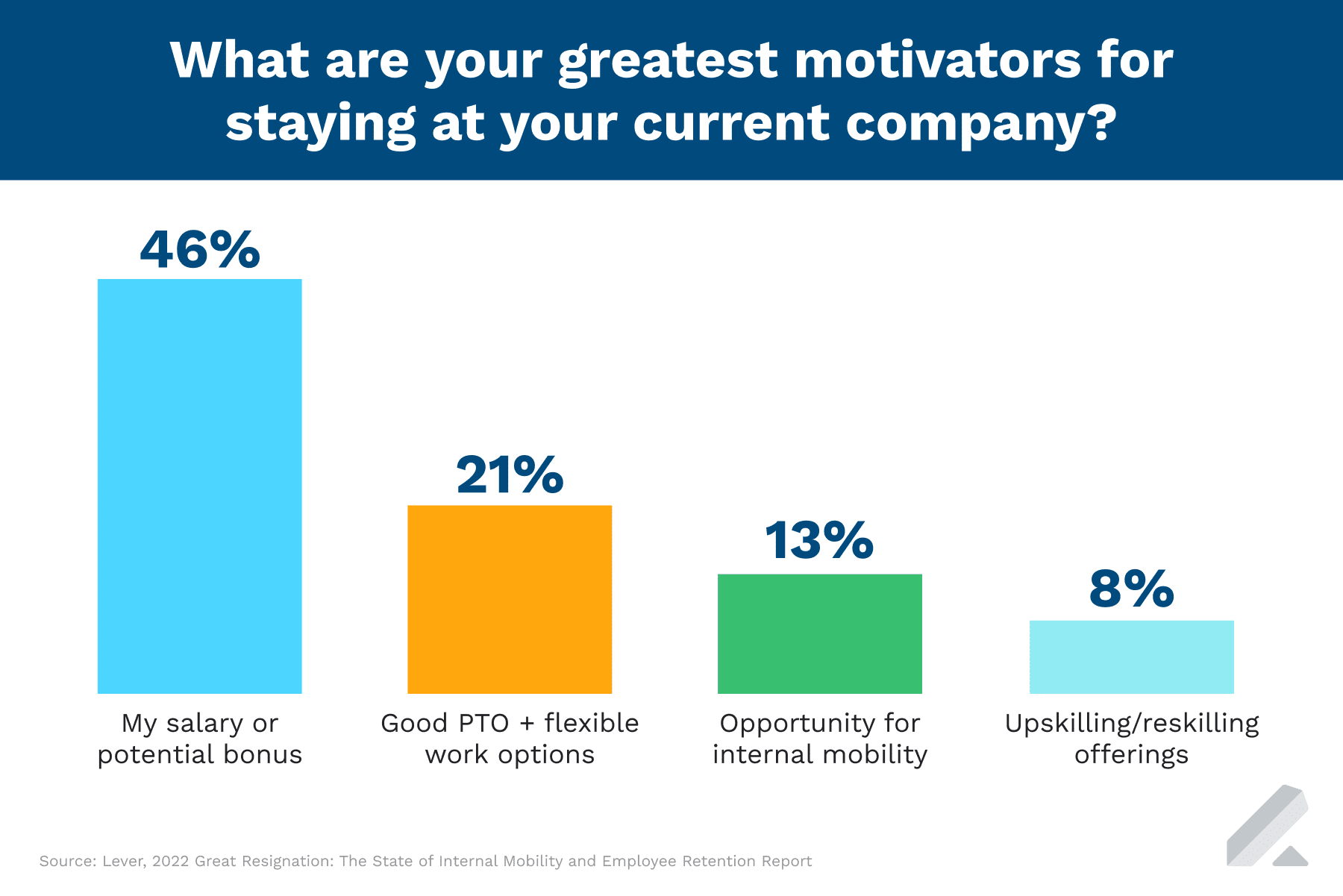
When breaking down the data by gender and generation, our report found that:
- More women (64%) than men (56%) are likely to stay at their current job for more than a year.
- Gen Zs (13%) are more than twice as likely to leave their current job in the next month, compared to Millennials (5%), Gen X (3%), or Baby Boomers (6%).
- Gen Zs (40%) and Millennials (62%) are also more likely than other generations to ask for role changes.
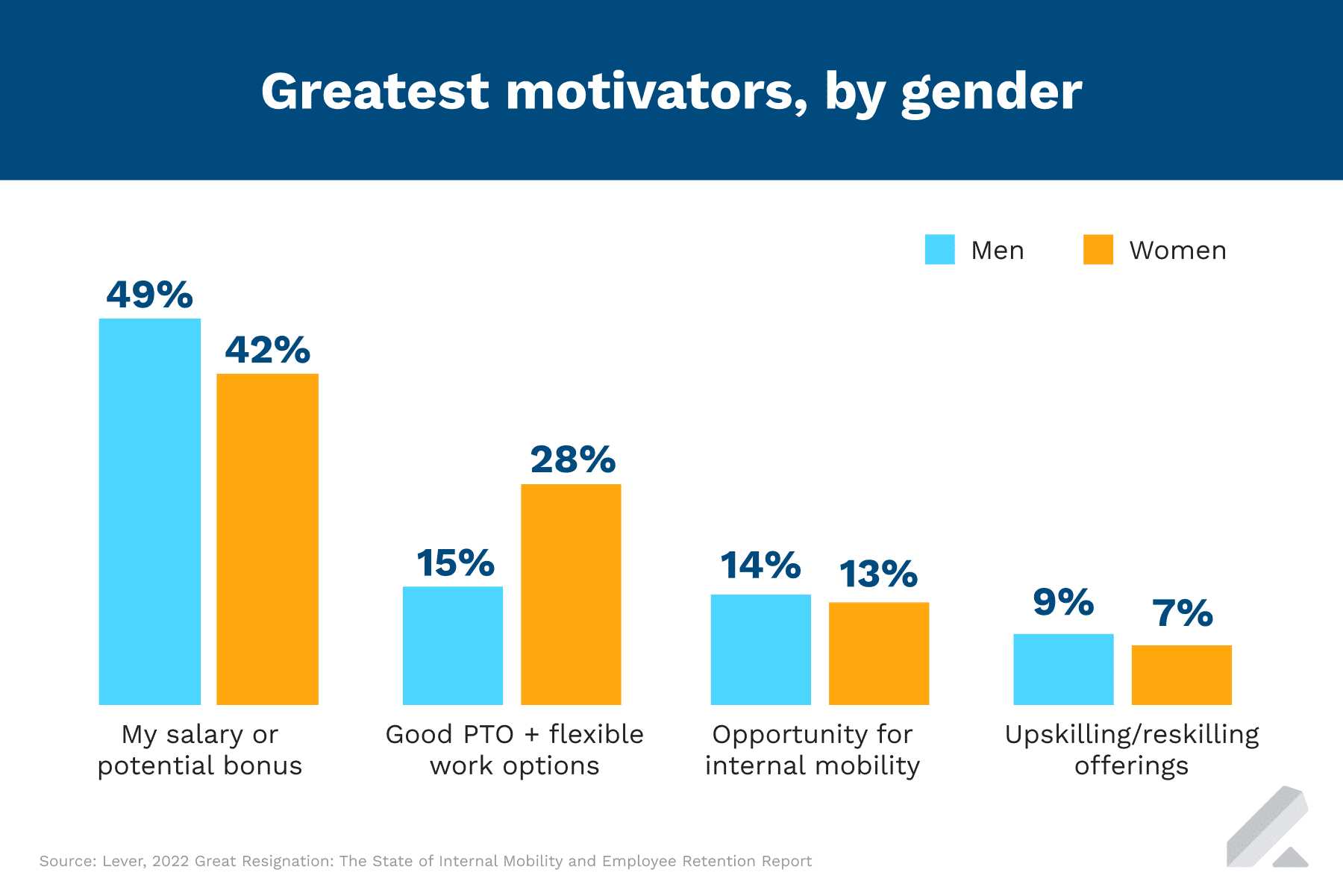
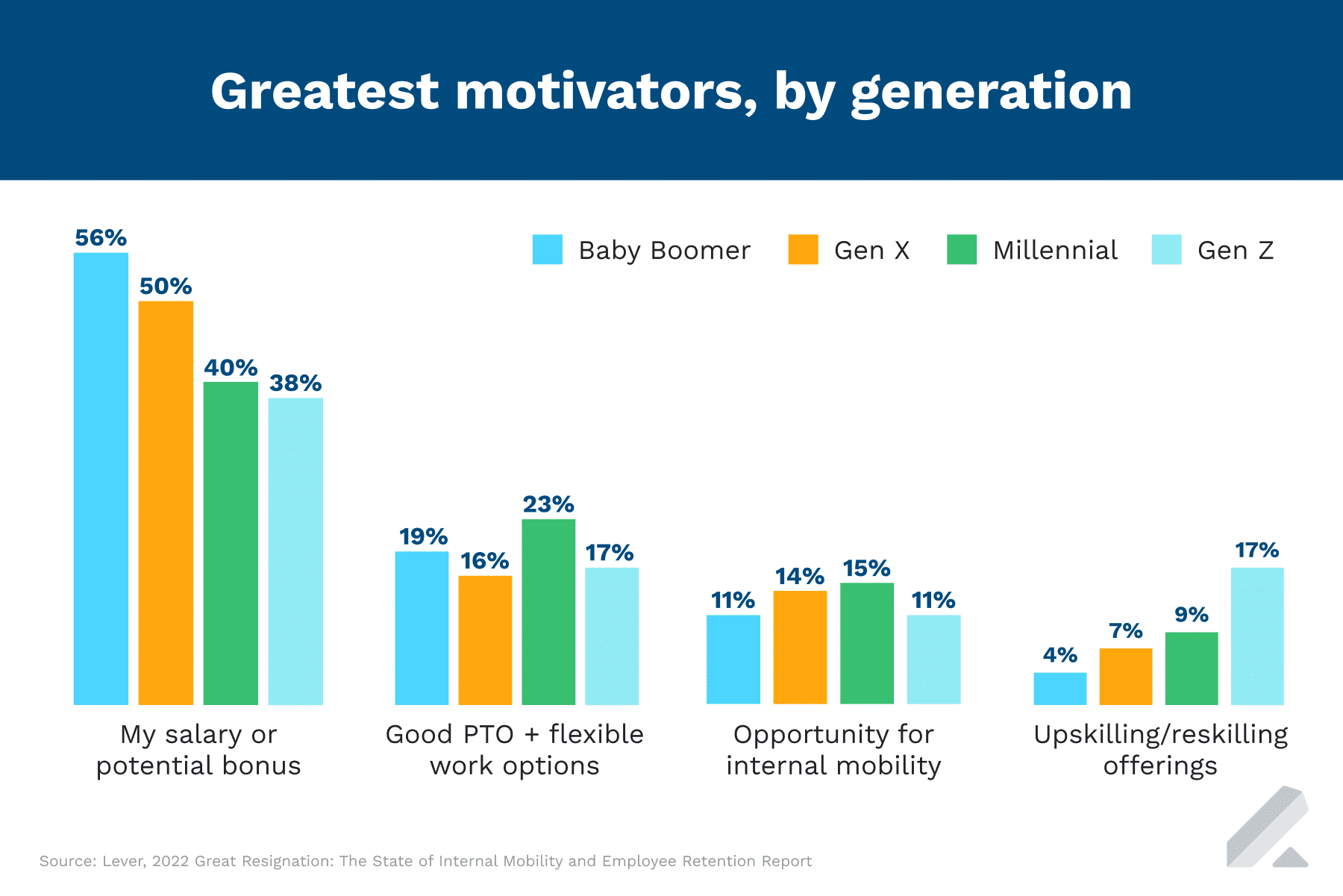
Internal mobility is a crucial factor for retaining talent in 2022
The desire for more internal mobility is a key factor in driving talent retention this year. Our report found that many employees don’t feel encouraged to pursue new roles internally (33%), nor do they feel they can openly discuss internal opportunities with their managers (21%). Additionally, many employees aren’t sure who to speak to within their organization about internal mobility opportunities (13%).
More than three in five (61%) employees say they’d search for a new role if their company didn’t allow role changes, while over two-thirds (67%) would leave their organizations altogether if they didn’t allow internal mobility.
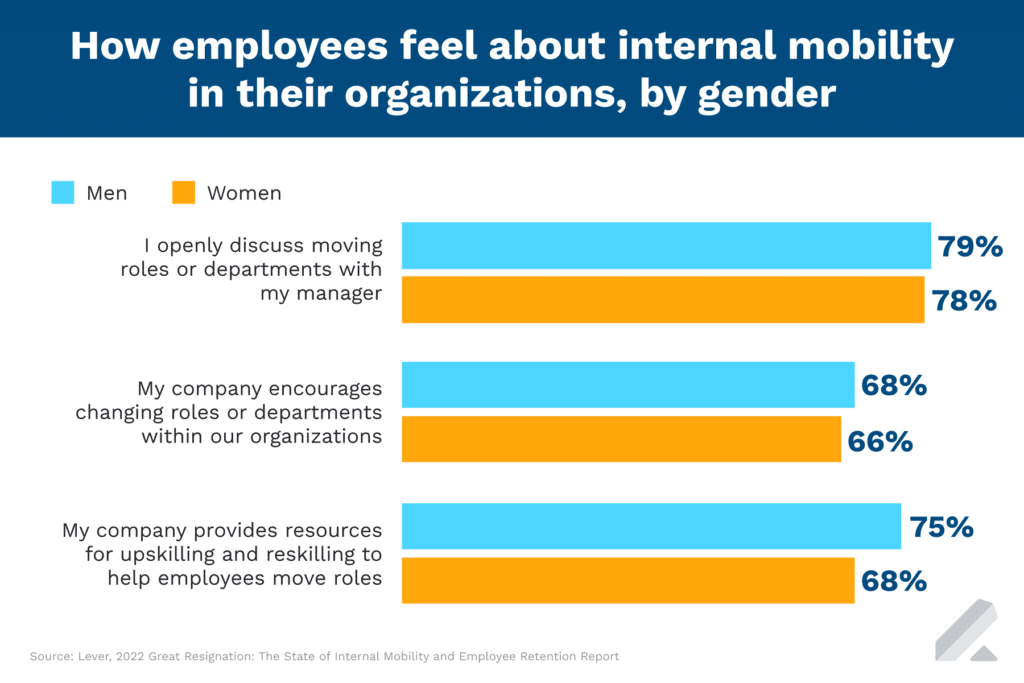
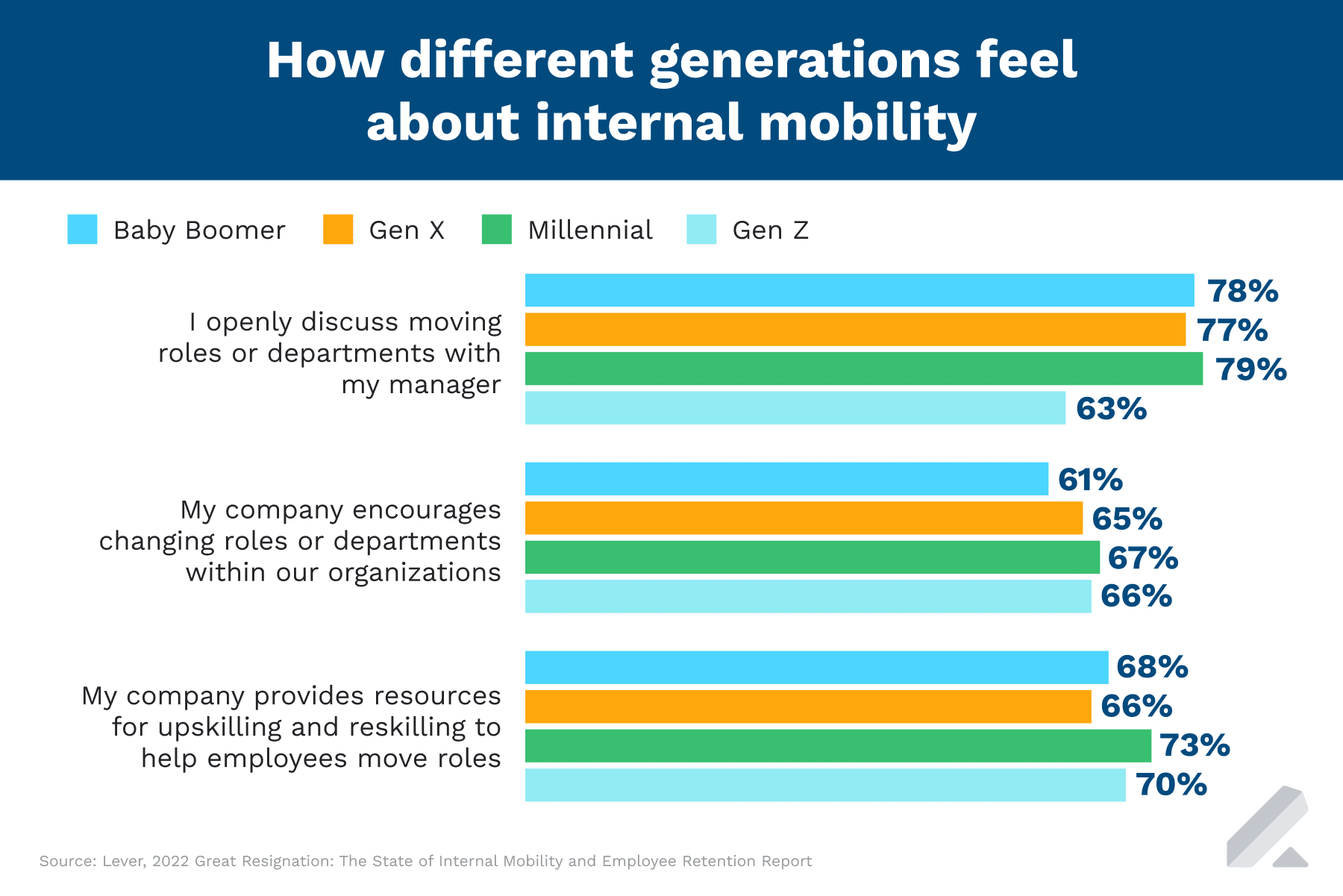
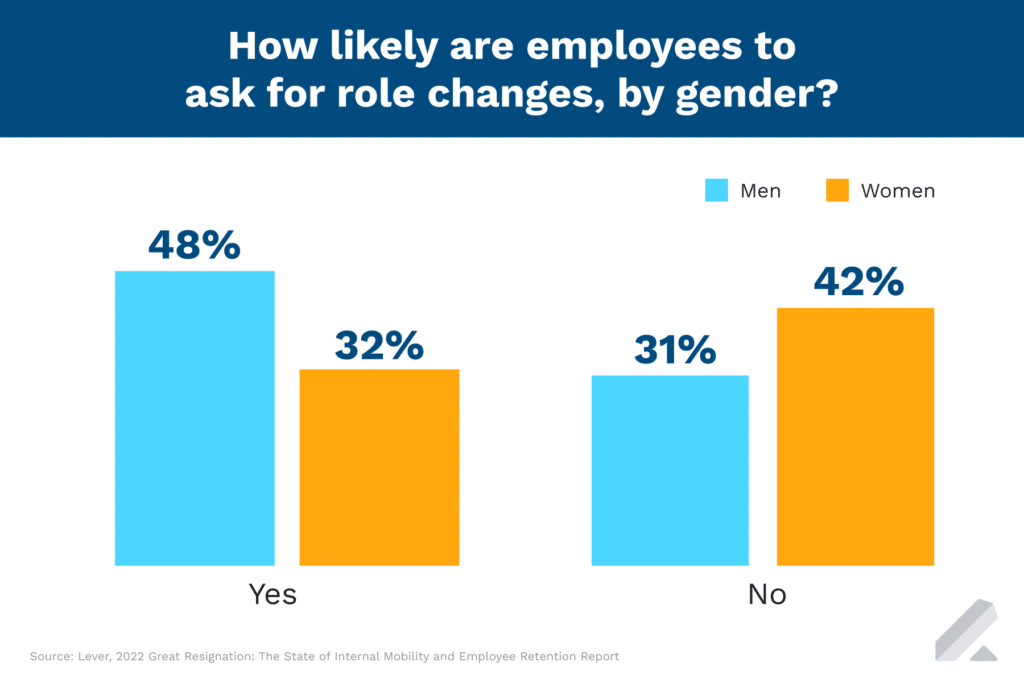
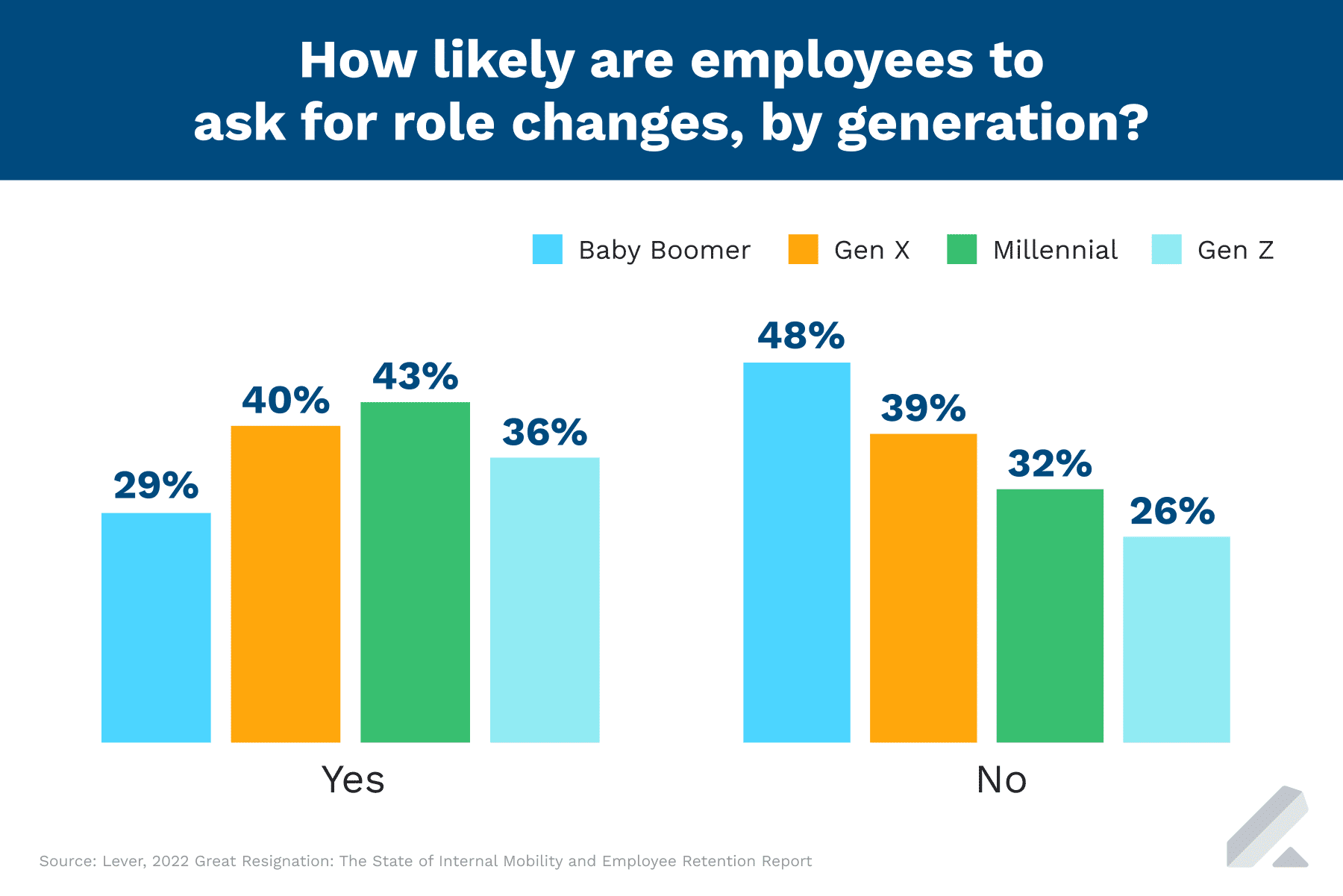
Upskilling can help employers retain talent while empowering employees to petition for role changes
Ensuring employees have the tools, resources, and opportunities to upskill or reskill benefits both employers and their teams. For example, our report shows that, at companies that provide upskilling or reskilling, 61% of employees have taken courses to grow in their current role while 23% have taken courses to grow into a new role.
We also found that over two-thirds (70%) of employees say their company provides opportunities for upskilling or reskilling—an offering that motivates nearly one in 10 employees (and nearly one in five Gen Zs) to stay at their company.
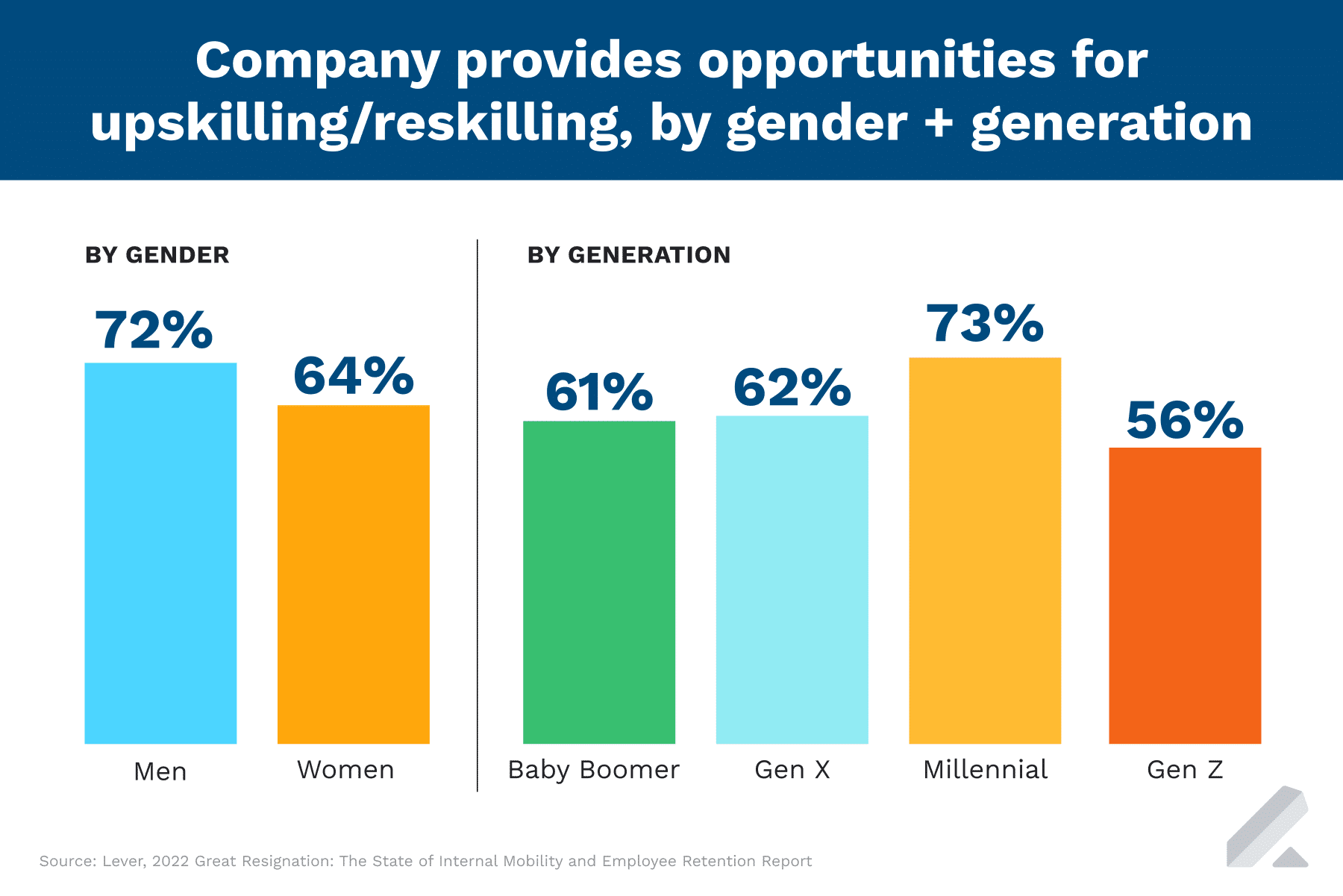
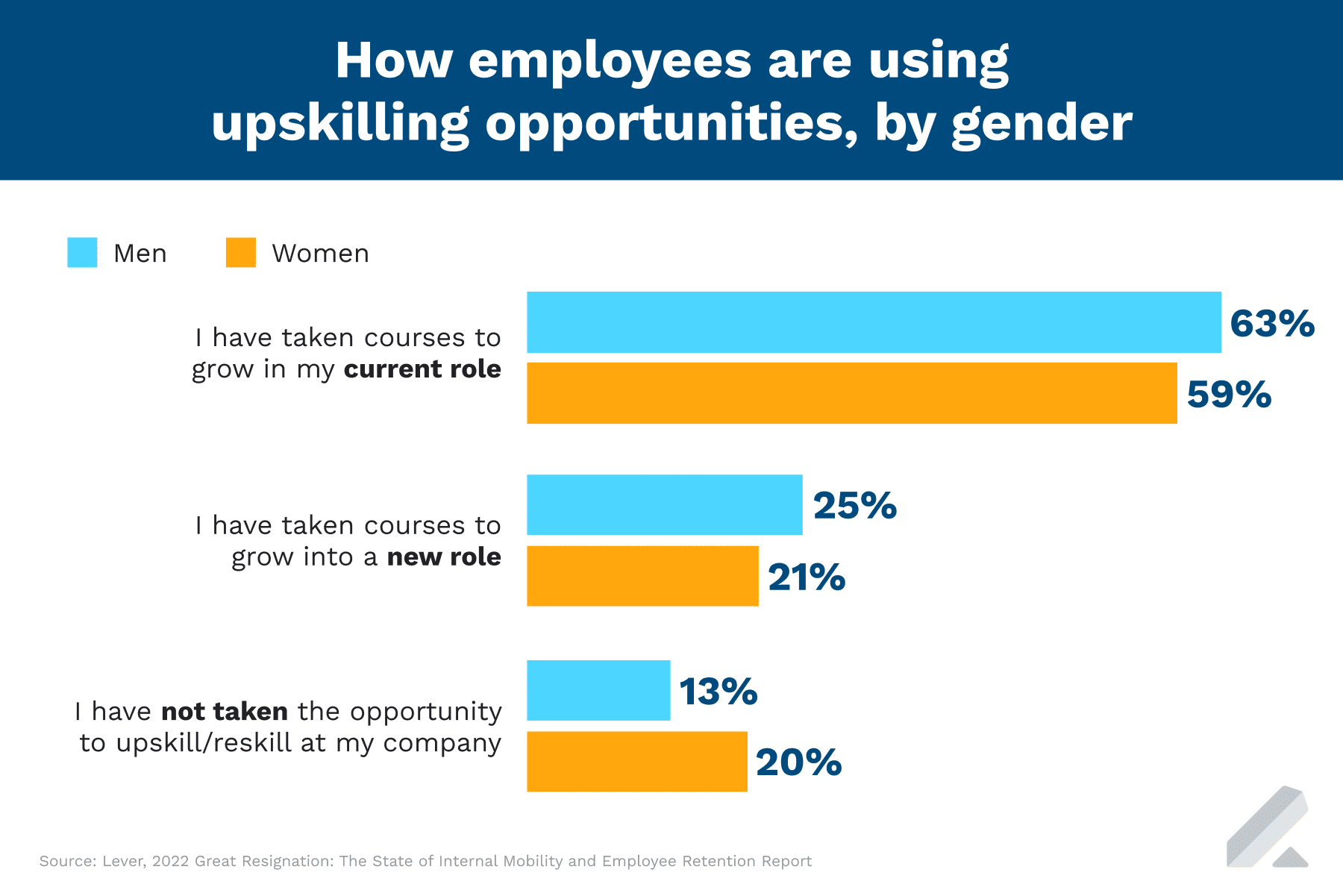
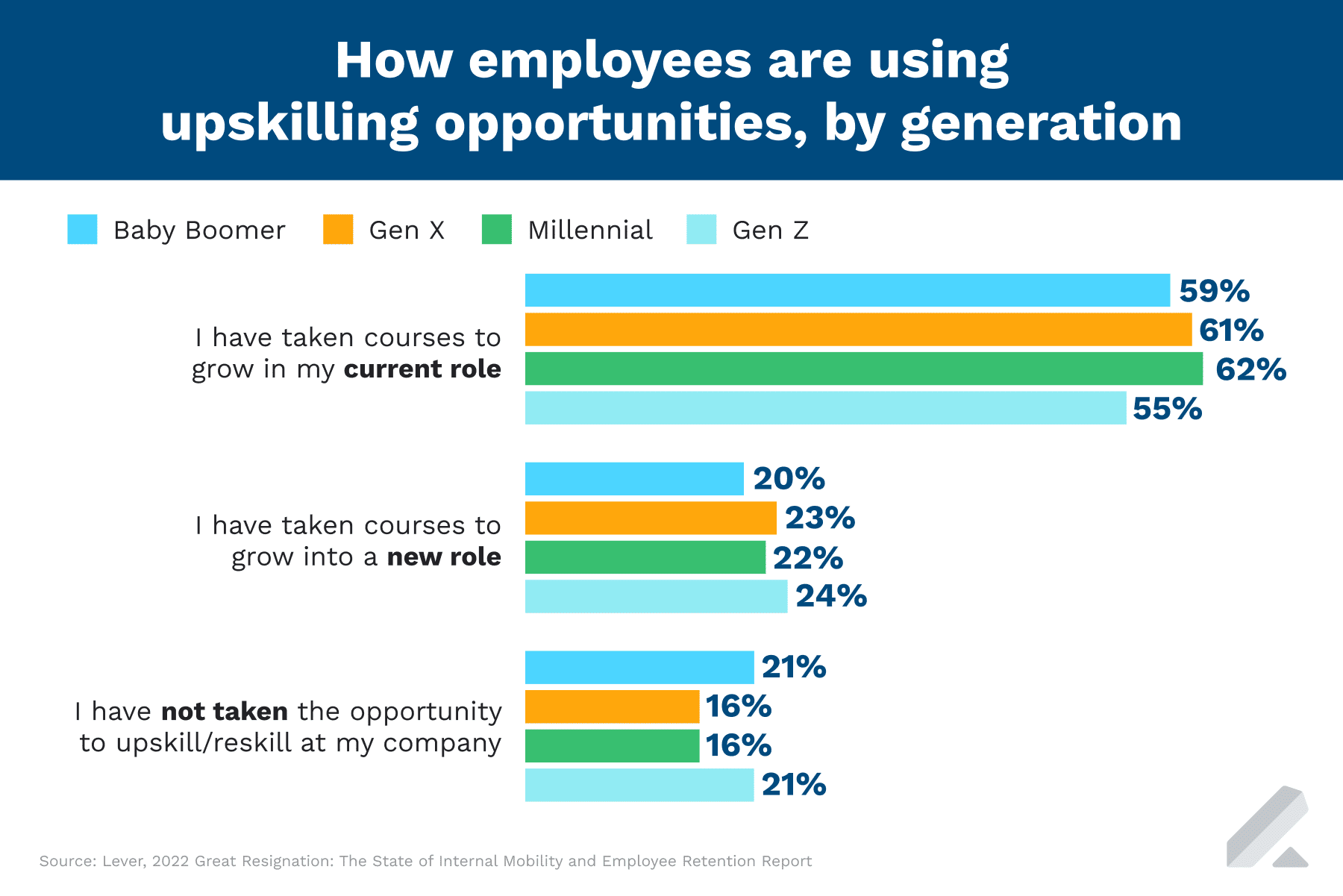
Boomerang employees may be recruiters’ best chance at attracting talent—if they can leverage their companies’ key differentiators
Employees are willing to rejoin or return to previous employers based on shifting priorities around compensation and benefits. For instance, as our report shows, more than half (52%) of employees would consider returning to a former employer, with most returning for better benefits (29%), more room for growth opportunities (22%), and more opportunities for upskilling/reskilling (16%).
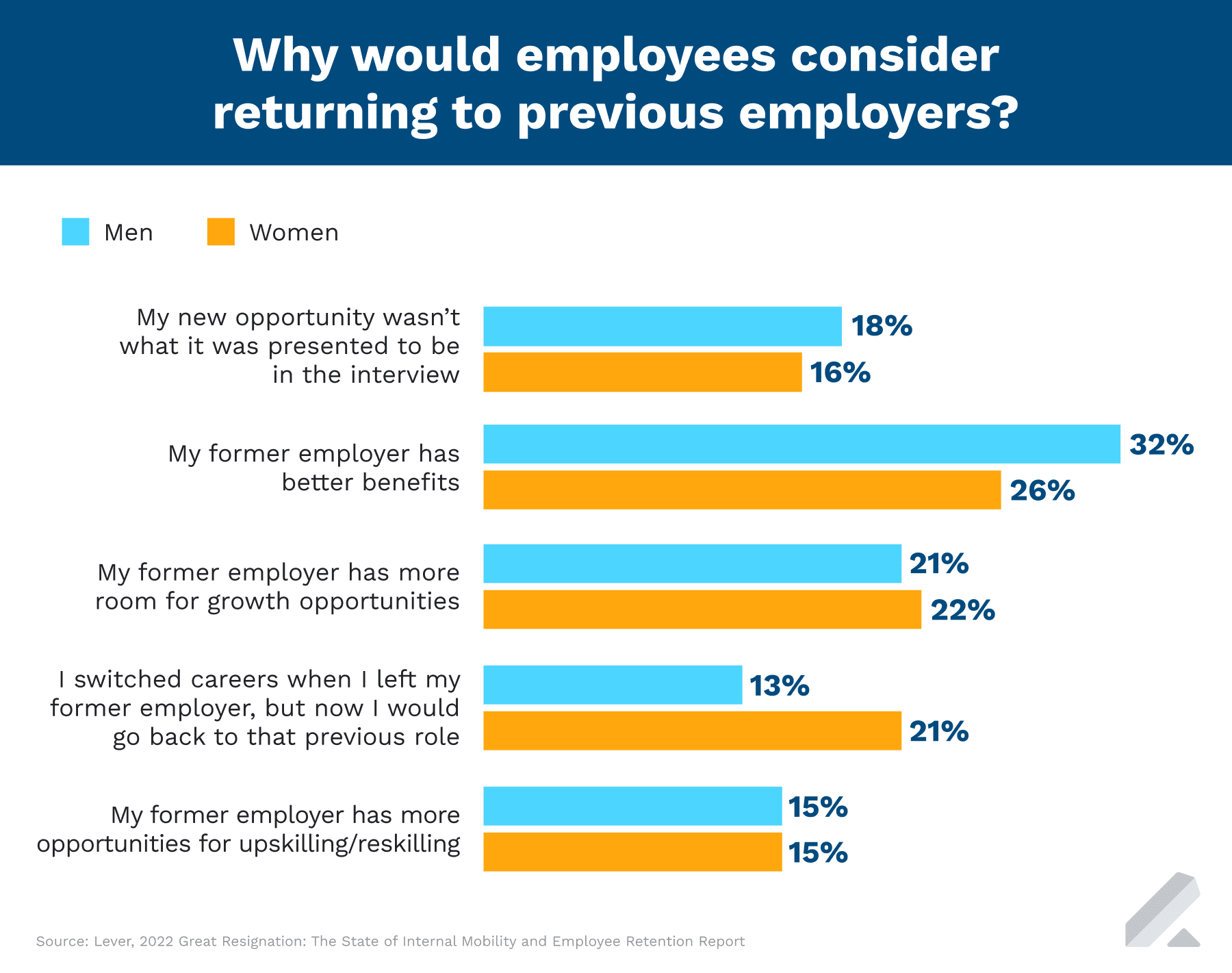
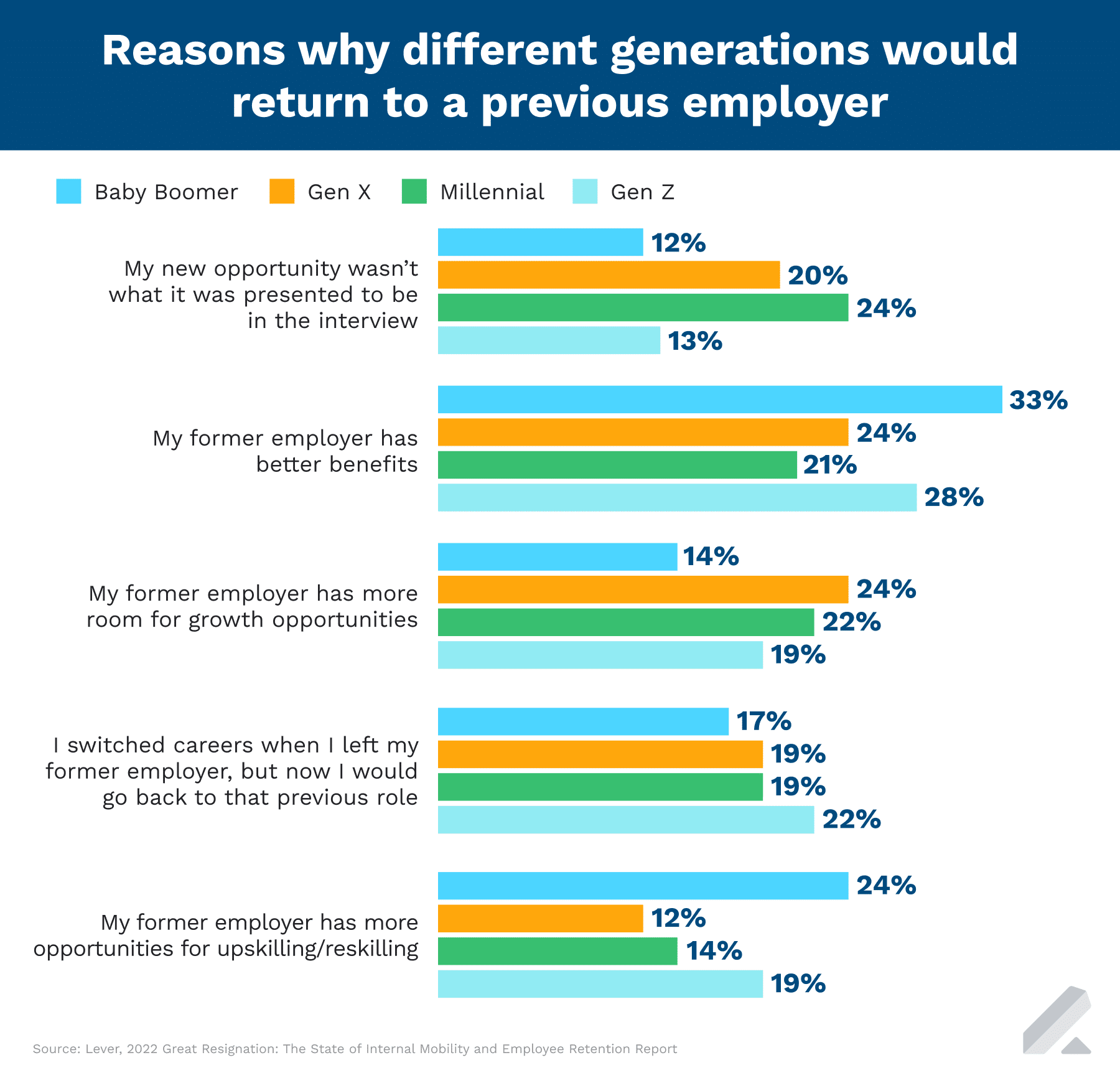
When it comes to exploring new roles, Gen Z has different priorities
Though our data shows there are many similarities among the generations’ desire for internal mobility, better compensation, more flexible work, and upskilling opportunities, one glaring difference is Gen Z’s shifting priorities when it comes to exploring new roles.
From a recruitment perspective, understanding what this young yet influential generation of employees is seeking in new roles is critical to attracting and then retaining this talent. For Gen Z, highlighting a sense of purpose in the role is critical, as 42% would rather be at a company that gives them a sense of purpose than one that pays more, while Millennials (49%) and Gen Xs (56%), who would rather work for a company that pays more than gives them a sense of purpose
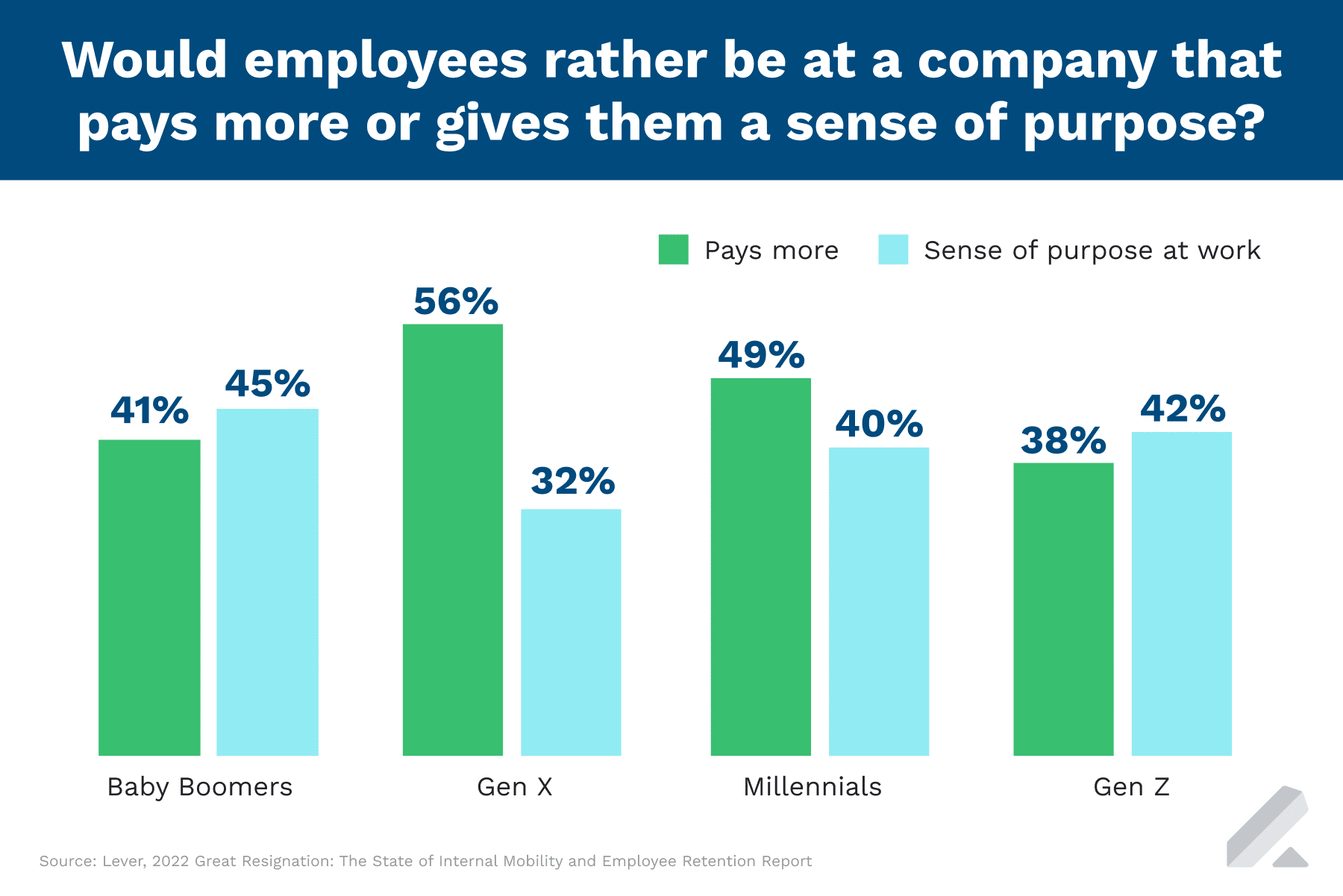
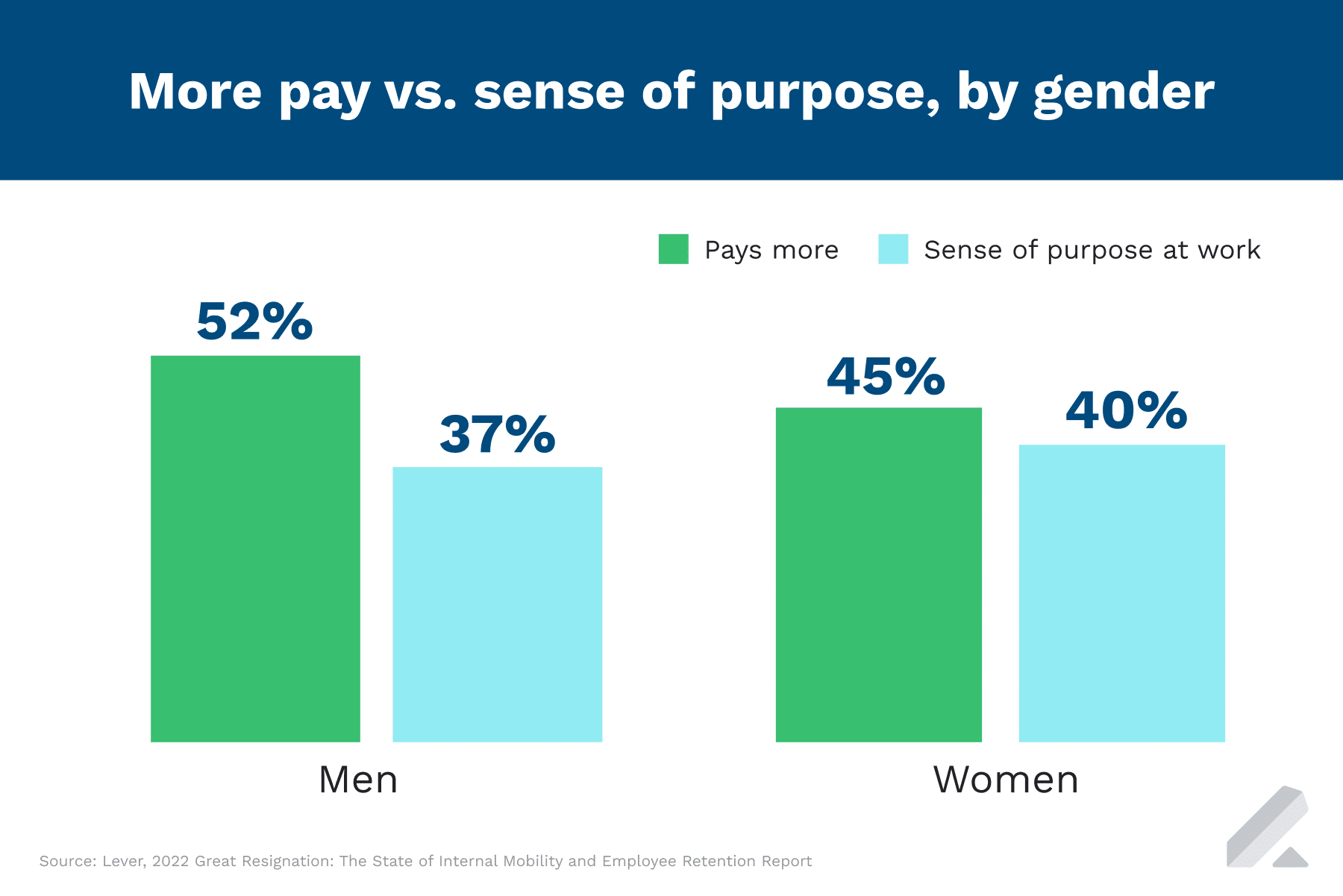
What do employees want their organizations to prioritize in 2022?
As recruiters and talent acquisition teams enter another year of the Great Resignation, it’s imperative that organizations focus not only on culture and perks, but nurturing environments where internal mobility, flexibility, compensation, and upskilling are inherent to their cultures.
Our “2022 Great Resignation: The State of Internal Mobility and Employee Retention Report” shows that, of all factors most pressing for each generation, flexibility in how and where people work is the key factor employees are hoping their employers will prioritize this year.
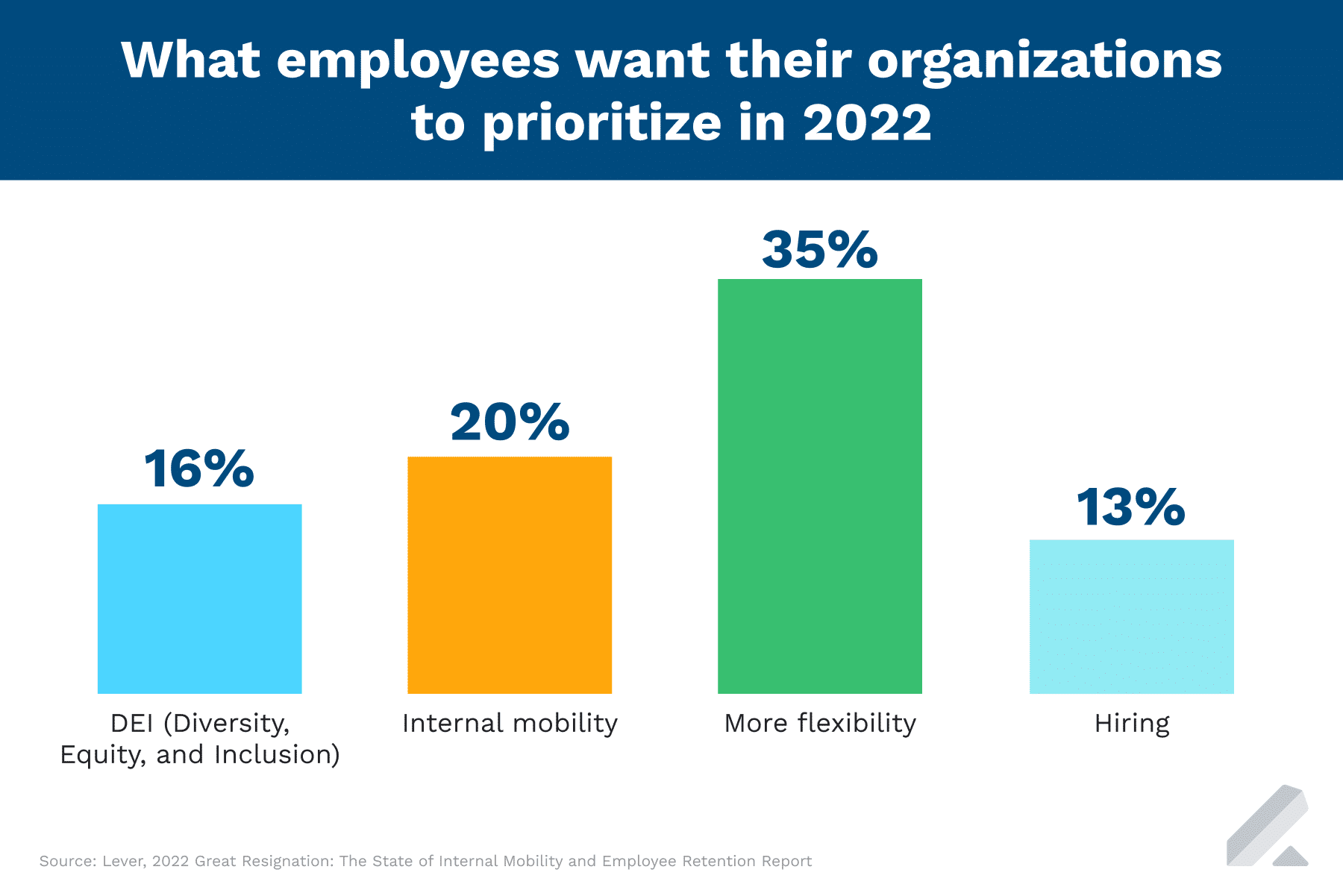
When studying the other factors employees want their organizations to prioritize, we broke the data down by gender and found that men (22%) are more likely than women (19%) to want their C-Suite to prioritize internal mobility most in 2022.
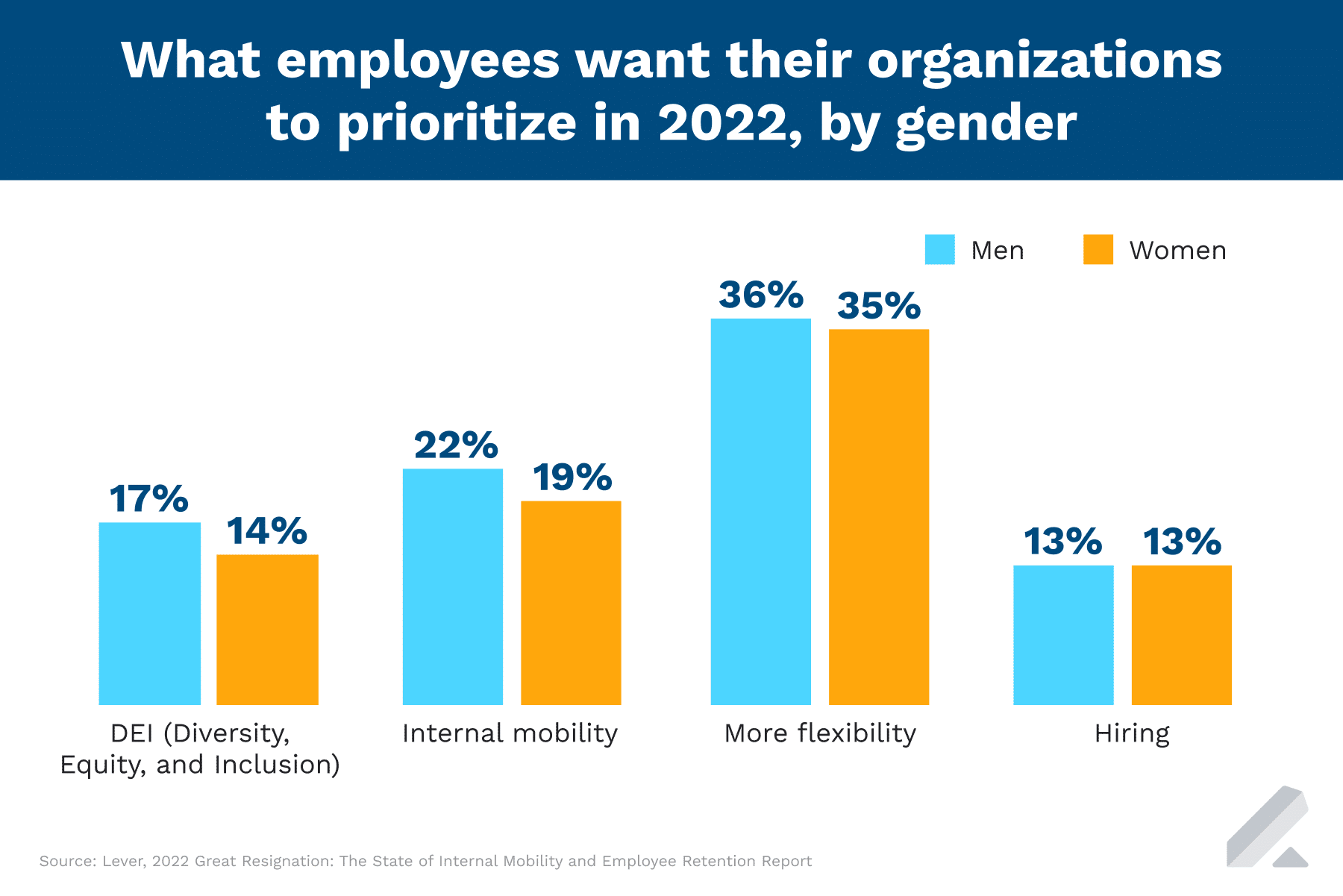
When looking at the more pressing factors among all generations, it becomes clear that flexibility is most important among Gen Z, Millennials, Gen X, and Baby Boomers alike.
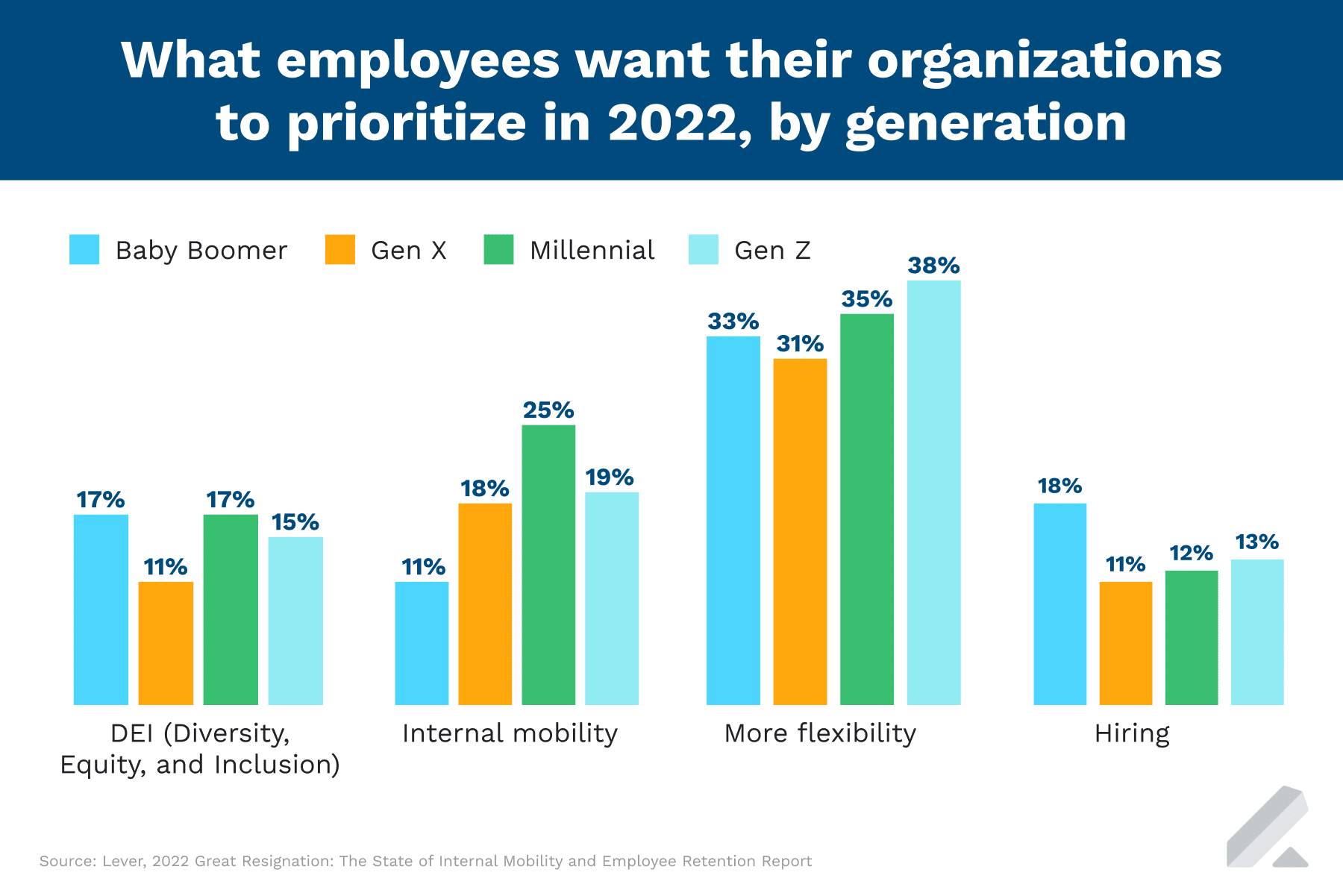
Attract and retain top talent, even during the Great Resignation
Lever’s “2022 Great Resignation: The State of Internal Mobility and Employee Retention Report” was conducted to help recruiters and talent acquisition pros better understand how you can attract and retain top talent in 2022. We surveyed 1,200 full-time, employed adults (via Pollfish) in the U.S. across a myriad of industries to determine how employees feel during the Great Resignation and the top factors influencing their decisions to remain with their current employers or seek out new opportunities.

